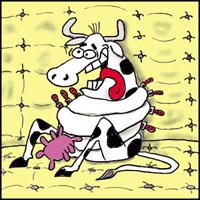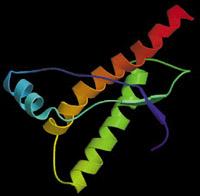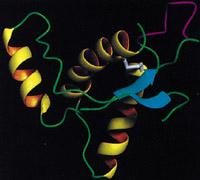What is mad cow disease?

Encephalopathy is just a type of spongiform encephalopathy, mental illness. Spongiform encephalopathies are degenerative diseases of the nervous system. Very slow, but lethal. The cause of these diseases -in all species- is a little-known agent, the prion.
The answer to the title question is correct, but it does not explain what is the disease of today's mad cows, since to do this we must take into account the different spongiform encephalopathies.
according to the species, although these encephalopathies are called differently, it seems that it is a disease, since the symptoms are similar and develop in the same way. Although the incubation period is very long, immune responses, inflammations, or biological irregularities are never detected. Until signs of the disease itself appear – depression, hallucinations, loss of control of the legs, tetraplegia… – it is not possible to detect the disease. After the onset of these symptoms, death comes quickly.
Human Spongiform Encephalopathies "natural" XX. They have been known since the beginning of the 20th century and have small differences between them:
- Gerstmann-Straüssler-Scheinker syndrome. Strong dementia of genetic origin. Low incidence, one case per 100 million inhabitants.
- Family Insomnia Inevitable. Genetic disease that causes sleep loss. Low incidence, one case per 100 million inhabitants.
- Alpers disease. Very rare disease in children.
- Creutzfeldt-Jakob syndrome. Low impact disease, one case per million inhabitants per year. It affects people over age 60. 90% of cases are spontaneous and 10% genetic. It is impossible to detect a disease as many years pass in incubation. The safety diagnosis can only be made with biopsy or autopsy, as it is often mixed with Alzheimer's.
- Kurua. In 1957, the indigenous Fores of New Guinea were first diagnosed. The indigenous fores were cannibals and in the rites they ate sacred brains for them, especially women. The most prominent feature of the disease was insane laughter.
From sheep to cattle, from cow to man

Lately it is being observed that the theory of encephalopathies is changing, since it has been seen that they are diseases that are transmitted from a rare and isolated disease, in some cases genetically.
The scrapie or Tremor of the sheep was the first transmissible spongiform encephalopathy identified in 1732. This disease is not known very well and, at a certain time, if such a sheep appeared, it died without more, for not giving bad fame to the flock. In the last two centuries it has spread all over the world, but its influence was not very evident until in the 1970s many British sheep became ill by the infected vaccine Louping ill.
Bovine spongiform encephalopathy is also a transmissible disease. It was officially approved in 1986, but in 1883 data were already collected on this disease in France and Germany. It seemed that the disease was spontaneous among the cows, but it has been proven that the cause of the disease was the primary cause of Scrapie. According to experts, the Scrapie prion, through feeding, was recycled and adapted to cows. However, bovine spongiform encephalopathy caused no weakness until the danger of human transmission was known.
The new version of Creutzefeldt-Jakob syndrome is a consequence of the previous process. Although it is new, the disease is the same, but it has different characteristics: the final phase is longer, it also affects young people and the symptoms of dementia, if necessary, are cruder.
In short, it should be said that transmissible spongiform encephalopathies existed in themselves, even if they were very rare and rare diseases, but they have grown as a consequence of modern parenting techniques and the globalization of contacts. New spongiform encephalopathies seem harder than their own, have greater transmission capacity and affect an increasingly younger population. The key is its capacity for recycling, adaptation and empowerment.
But what are prions?

It has remained for the end, but perhaps the most priographic concept was the one that had to be explained from the first line, since they are fundamental to understanding transmissible spongiform encephalopathies.
The truth is that what scientists know about prions is not much. It is a particle made up of mutant proteins, present in all infected brain tissues, and is equal to the Prp-c protein that contains all animals, including humans. Hence the prion can cross the border between species. Prions seem to influence that the natural protein Prp-c also suffers mutations, causing degenerative diseases of the nervous system, transmissible spongiform encephalopathies. Prions enter neurons and reproduce unwittingly until the nerve cell explodes. It expands in brain tissue. Because of their similarity to natural protein, prions are not detectable because they do not respond to the immune system.

Prions can transform all built knowledge about the laws of life. The natural protein Prp-c is found on the surface of neurons. This gene is found on the same chromosome in all species, so it may be thought that it has played an important role in evolution. However, it has been considered to be of no use but to produce protein.
Prions reproduce without DNA and have no relation to messenger RNA. This means that the proliferation of prions is not due to genetic errors, but reproduces spontaneously. And that goes against the laws of knowledge in life that human beings have developed. Therefore, there are still many questions to answer: How are they transmitted? How do they travel to the brain? Why are other proteins able to mutate? Answering these questions will open the door to solving the problem.
Buletina
Bidali zure helbide elektronikoa eta jaso asteroko buletina zure sarrera-ontzian










